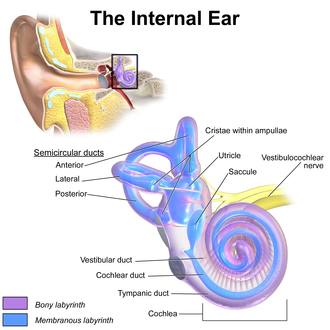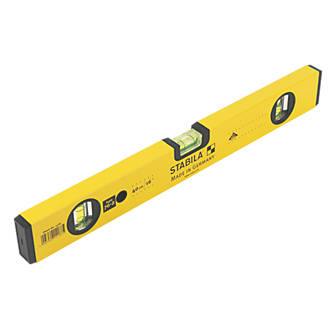What is Vertigo?
Vertigo is a sensation that can make it feel like the world around you is spinning or that your head is in motion. Despite common associations with heights, the term “vertigo” in the medical context specifically relates to this disconcerting feeling.

What is the difference between Vertigo and Dizziness?
People often confuse these symptoms and they can be difficult to tell apart. Dizziness is when you feel like you are falling to one side or feel ‘woozy’. Vertigo is when it feels like the room is spinning or your head is spinning.
Lightheadedness is when your energy feels low, like you might faint. The feeling of poor balance is known as imbalance.
Why does it feel like My Head is Spinning?
People usually describe vertigo as the feeling that the room is spinning or that “my head is spinning”. The reason it feels that way is because your eyes are ‘twitching’ or moving very quickly without you asking them to. In medicine they call this eye-twitching Nystagmus. Any condition that causes this eye twitching, or nystagmus, can cause the feeling that the room is spinning. As mentioned above, we call that symptom Vertigo.
Here is a video of someone experiencing nystagmus or eye twitching. We can see their eyes moving rapidly, they will feel like the room is spinning around (vertigo).
Do I have Vertigo?
What Causes Vertigo?
Vertigo can be a symptom caused by various factors, including:
- Benign Paroxysmal Positional Vertigo (BPPV): This is the most common vestibular disorder and occurs when tiny calcium crystals (otoconia) become dislodged within the inner ear canals, leading to episodes of dizziness and vertigo.
- Labyrinthitis and Vestibular Neuritis: These conditions involve inflammation or infection of the inner ear or the vestibular nerve, causing symptoms such as vertigo, dizziness, and loss of balance.
- Meniere’s Disease: This chronic condition affects the inner ear and is characterized by recurring episodes of vertigo, hearing loss, tinnitus, and a sensation of fullness in the affected ear.
- Migraine Associated Vertigo: Migraine Associated Vertigo is a type of migraine that produces vertigo (spinning) as one of its symptoms.
- Post-Concussion Syndrome: After a head injury, individuals may experience persistent symptoms like dizziness, imbalance, and disorientation due to vestibular system disruption.
- Age-Related Vestibular Disorders: As we age, the vestibular system can undergo natural changes, leading to issues with balance and spatial orientation.
What is BPPV or Benign Paroxysmal Positional Vertigo?
Benign Paroxysmal Positional Vertigo is a condition in which vertigo is caused by little salty crystals getting stuck in the canals of the inner ear organ (the labyrinth). It’s really hard to describe in writing but this video does a wonderful job.
Essentially, that little labyrinth organ is like our ‘level’. We use it to sense what position our head is in


Unfortunately, little salty crystals or Otoconia sometimes get stuck in the little loops or canaliths of the labyrinth. This video does an excellent job of illustrating what is going on:
Those little salty crystals (Otoconia) cause the labyrinth to send messages to the brain saying that we’re spinning around. That makes the eyes twitch (nystagmus).
What is Ménière’s Disease
Meniere’s disease is a disorder of the labyrinth organ. It causes vertigo, hearing loss and tinnitus (ringing in the ears). It also often causes a feeling of fullness in the ear.
What is the Treatment for Vertigo?
The most appropriate treatment for vertigo depends on the cause of the vertigo. As discussed above, vertigo is a symptom, not a disease. It’s a bit like asking “what is the best treatment for pain?”. The obvious answer is “it depends what is causing the pain”. Since BPPV or Benign Paroxysmal Positional Vertigo is the most common cause of vertigo, it makes sense to start there.
Treatment for BPPV or Benign Paroxysmal Positional Vertigo
The best treatment for BPPV is something called Canalith Repositioning. That sounds really complicated but it’s actually quite a simple concept.
If the little salty crystal is stuck in one of the loops (canaliths) of the labyrinth then we need to get it out of there! Imagine you had a marble in a curved drain pipe with a plug at one end. You would tip the drain pipe upside down and turn it to get the marble to roll out right? It’s the same with the little salty crystals (otoconia) in the canalith of the labyrinth. We use a series of positions to get the crystals to ‘roll out’ of the other end.
Which positions to use depends on which canalith the crystals are stuck in. You can’t do that on your own unfortunately, you’ll need the help of a Physiotherapist or Athletic Therapist with specific training in vertigo treatment. Fortunately, we have a bunch of those at our clinics so you can just give us a call 😉
There are some other conditions that cause vertigo, we’ll talk through a few of the more common ones below.
Labyrinthitis and Vestibular Neuritis
Labyrinthitis is an infection of the little balance organ of the inner ear – also known as the labyrinth. It is usually caused by a viral infection and clears up on its own but sometimes it is caused by a bacterial infection and antibiotics can be used. Vestibular Neuritis is a viral infection that causes inflammation of your vestibular nerve (the nerve connecting your labyrinth organ to the brain). Sometimes hearing loss can occur and if so you should seek medical attention as soon as possible.
Other Conditions
With other conditions and symptoms the treatment approach is personalized & aims to improve function of the vestibular system and enhance the ability to adapt to various sensory inputs. It typically includes:
- Customized Exercise Programs: Tailored exercises that focus on gaze stabilization, balance training, habituation exercises, and eye-head coordination exercises.
- Adaptation Exercises: Techniques to help the brain adjust to the altered signals from the vestibular system, reducing symptoms like dizziness and vertigo.
- Education and Lifestyle Modifications: Providing patients with strategies to manage their symptoms in daily life, including changes in movement patterns, dietary modifications, and stress management techniques.
What now?
If anything mentioned above rings a bell you will probably benefit from an assessment by a Physiotherapist or Athletic Therapist trained in Vestibular Rehabilitation. We can liaise with your family Physician and help organize referral to a specialist if required.
You do not need a referral from your Family Doctor to be assessed by a Physiotherapist or Athletic Therapist. If you would like to book an assessment please go ahead and click the link below. If you would like more information, please give us a call or fill in the contact form below.
